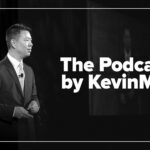Several decades ago at our local hospital in northern Los Angeles County, an onslaught against doctors began. The administration marginalized and discredited them. It was not due to a lack of medical skill or knowledge, as certain physicians were labeled “troublemakers” and “threats” to health care in our small community.
The chief of staff and I, the chairman of the Department of Medicine, were members of the staff, some of whom were targeted because we were whistleblowers. Consequently, upon learning about the medical staff at a community hospital north of us in the Central Valley facing a similar battle, concerns were raised that this was no coincidence.
Historically, it signified the start of a continuous struggle for hospital physicians’ independence and self-governance in making appropriate medical decisions for their patients, as hospital administrators raised their profits and salaries, which these whistleblowers exposed.
It was also a moment when a team led by a physicians’ advocacy group, along with a state medical association, the national medical association, doctors, and the community came together to stand against a planned attack from a powerful foe.
A Central Valley public hospital was established to serve the primarily farming community of the region. Like our hospital in northern LA County, it built a “tower” of rooms for hospitalized patients and even purchased a “gym” outside the facility for rehab and exercise.
What caught our attention was that the medical staff, like that at our hospital, was self-governing, with a Medical Executive Committee (MEC) that had bylaws and governing rules separate from and independent of the hospital administration. This assured that hospital administrators would not “practice medicine” and take over patient medical decision-making.
The hospital, like all hospitals in California, had a board of directors, along with a CEO and a CFO.
According to a local newspaper report, the hospital’s board of directors dismissed the existing MEC and replaced it with doctors of their choosing, violating state law. This allowed the board to control the newly appointed MEC physicians, negatively impacting medical decision-making for hospitalized patients and thwarting any further whistleblowing.
At that time, the chief of staff and I, concerned about the situation, called the hospital’s chief of staff, whom we did not know, and initiated a meeting in his office with other previous MEC members on a Saturday morning, driving two and a half hours to get there.
At the meeting, we clarified the facts with the MEC doctors, recognizing that it would be complicated, so we contacted a physicians’ advocacy group in San Francisco for assistance.
In the ensuing weeks, following numerous interactive phone calls, we met again with the Central Valley doctors, with the advocacy group attending in full force, including their leadership team.
Strategic plans were outlined, including:
- A rally
- Public relations through the local newspaper
- Community meetings to educate voters about bond and health care board members
- Highlighting the financial mismanagement of hospital funds
The biggest challenge was obtaining financial backing, as the hospital had a substantial war chest, while the doctors needed to raise funds from the medical staff and the community. That’s when the state and national medical associations stepped in with much-needed funds for legal fees.
To stave off legal challenges, the hospital administration declared bankruptcy, closing its doors for several months, which temporarily blocked the doctors. However, the original MEC filed a lawsuit against the hospital administration using funds from the medical associations, which successfully won the case.
The administration was ousted, and the previous MEC was reinstated, allowing the hospital to reorganize and reopen its doors.
Ultimately, grand jury indictments were filed against the hospital administration, along with criminal charges, particularly for the mismanagement of bond funding for the tower.
Fortunately, we live in a state that protects both patients and those who provide their health care.
If the chief of staff and I did not believe it was necessary to drive two and a half hours to uphold the Hippocratic oath and help others, many families in the Central Valley would struggle to access quality health care.
Through the collaborative efforts of the physicians’ advocacy group, doctors, medical associations, and the community, the citizens of the region were empowered to make medical decisions with their doctors, free from interference by the hospital administration.
Many health care professionals continue to raise their fists in the air and advocate for patients’ rights to receive worthy medical care.
I hope our actions, even a decade ago, will inspire more voices to be heard in the future.
Gene Uzawa Dorio is an internal medicine physician who blogs at SCV Physician Report.




















![New data reveals the massive pay gap for women ER doctors [PODCAST]](https://kevinmd.com/wp-content/uploads/Design-4-190x100.jpg)



